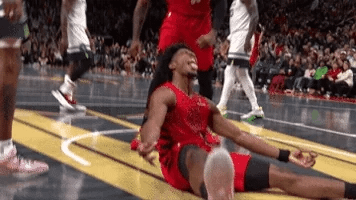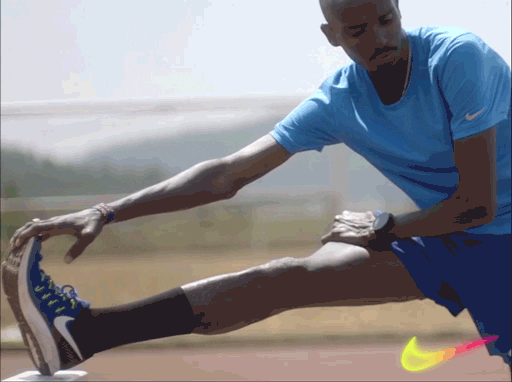We, as a society, share a great many ills, but perhaps none is more pernicious than our collective impatience. Our need for immediate gratification is a pox on us all, leading us to rarely know what the roses actually smell like—and we sure do miss a whole slew of those good things that are coming.
I do not say this as some outside observer casting aspersions; I myself am as guilty as anyone. But I did have an epiphany some time ago while waiting for a meal at a favorite restaurant.
Nestle in—it’s story time.
As many of you know, I have been in the restaurant industry for longer than LeBron has been in the league. I literally know how the sausage is made. And yet, at a meal where I was the diner, I found myself doing the very thing that drives me crazy.
About a decade ago, I was sitting at a French restaurant in San Francisco, anxiously surveying the dining room floor as I waited for my meal in agitation. Had the food taken a bit long? Sure. But why did that bother me? I knew the meal I was waiting for was going to be delicious, and while it was true that the restaurant was relatively empty, did that mean I should feel the need to have them rush my food? It wasn’t their fault I came in starving, and it’s not as though they had some Domino’s imperative of “30 minutes or less.”
In that moment, a light bulb went off as I recognized that the only reason I was acting this way was because I had been trained to expect expediency. (Patience and Bollwinkels have often made strange bedfellows.) However, I didn’t come to that restaurant for their fast service—I came because I knew my Chicken en Cocotte was going to be delicious. So instead of continuing to be fixated upon by some falsely conjured need to eat now, I sat there and enjoyed my company as I told my Pavlovian responses to shut the fuck up.
You know what? After that wait—which seemed far less prolonged once I stopped being consumed by my own forced irritation—the food was phenomenal, and I have taken that lesson with me and tried to apply it when I find that unwelcome sense of impatience welling within.
Why the long-winded and fairly mundane anecdote? Because this exact model needs to be applied far more often to sports—and in this case particularly, to one Scoot Henderson. A player who, less than 100 games into his career, had people snapping their fingers and demanding their satisfaction, all while the meal is still in the process of slowly coming together. And I don’t know if you’ve gotten the wafts from the Blazers' kitchen lately, but something tasty seems like it’s still in the works.
While I’m not quite ready to conduct a victory lap, I have held firm on Scoot while others were dumping his stock like it was, well, this past week in the market. But my relative resolution shouldn’t be that much of a proclamation for a player that has only logged 118 career games. Yet, I have been equally surprised and disappointed—even in this era of rushing to be the first to shoot a player down—with how quickly so many people have been willing to unload their Henderson holdings.
I reckon that a major part of that has to do with the fact that Scoot, in many ways, has not looked like the player everyone projected when he was taken with the second overall pick last summer. (In most drafts, Henderson would have gone first, but you know, Wemby and whatnot.)
Coming into the 2023 draft, following two years with the G-League’s now defunct Las Vegas Ignite, Scoot was thought to be a freak athlete at the point guard position, with many comparing him to the likes of Derrick Rose and Russell Westbrook. Note: While I have been guilty of denouncing badly constructed comps in the past, it’s incredibly difficult to frame some of these players within the context of a noteworthy predecessor. That’s quite the company to be held within, but the problem has been that Scoot just hasn’t looked like the explosive downhill athlete that many expected.
Much of the excitement in projecting Scoot was over his prospects as a pick-and-roll operator who could get into the teeth of the defense as a distributor or physical finisher. Listed at 6’3” (that’s generous) and 206 lbs of chiseled muscle, Henderson looks the part. His 11.4 drives per game this season are nearly three more than any other player in his draft class (Keyonte George is 2nd with 8.5) and good for 33rd in the entire league. So, the general premise holds, but the execution has been shaky at best and has rattled collective confidence at worst.
A little under two years into his career, Henderson is shooting just 49.7% at the rim, per Cleaning the Glass, and while he has improved from a wince-worthy 46% last season to 55% this year, that improvement takes him from the 7th percentile positionally to just the 19th. So, he still stinks—but at least he’s no longer putrid. Unfortunately, even when Scoot stops a bit short of the opponent’s rim protector, he still hasn’t been particularly good, shooting just 36.6% on short mids. All in all, Henderson is shooting just 45% from nine feet in for his career.
Scoot’s 2025 shot chart thanks to postiveresidual.com
This is because Scoot can no longer rely on being the best athlete on the floor at all times. Instead, he now has to figure out how to utilize speed variation and shot positioning to finish, as opposed to his raw athleticism just getting him past guys. That process, especially for a player who has never had to contend with athletic limitations before, takes time, as it’s about feel and pacing.
Scoot is learning when to throttle up and down to get the defender off balance
Tethered directly to the lack of elite athletic burst and the inability to finish is the fact that Henderson still doesn’t process the game at the speed you want from a franchise-level point guard. His spatial awareness and predictive passing are subpar at best, as he just does not navigate space to create opportunities for himself or others the way everyone presumed he would.
In fairness to Henderson, in the few games I watched of him in the G-League, he was never an elite processor or distributor in the vein of Chris Paul. His strength as a passer came from his ability to create collapses in the defense and then distribute accordingly. Much like Russ, Scoot is still processing linearly, so much of the exciting ingenuity that we see from the league’s best playmakers just isn’t there yet. This means the fact that he isn’t creating opportunities by forcing defenses to collapse makes Scoot’s relative lack of creativity more glaring, as he struggles to find passing lanes often—Henderson’s 9.7% turnover rate on his drives is tied with now injured Dejounte Murray for the highest in the NBA for any player averaging at least 10 drives per game.
That being said, his 7.1 assists per 100 possessions are good for 28th in the entire league and seventh among all bench players (min. 30 games played). Henderson is also leading the Blazers and is second among his draft class (Keyonte George – 6.0) in assists per game at 5.2, despite being just seventh on his own team in minutes per game at 26.5.
And that’s where we can turn this conversation back towards the good—because there has been a lot of good this season.
In his sophomore season, Henderson has lowered his turnovers per game by nearly a full oopsies per (from 3.4 last year to 2.6), despite keeping his assist numbers pretty close to the same (5.4 to 5.2). That distribution is made even more impressive when you consider the drop in usage from 26.5% last season to 22.2% this season—which I don’t love to see in terms of the efforts toward his on-ball improvement but reflects that he is continuing to make plays and doing so with better efficiency.
While the playmaking component continues to slowly take form, the shooting has been a pleasant surprise that has not garnered nearly enough attention.
In his short time in the league, Scoot’s shot has improved by light years. The mechanics look much better in terms of his follow-through and hand placement (Scoot has big ole mitts and tended to finger-palm the ball, much like Shaq), and he is letting it fly with confidence. His 4.3 threes attempted per game as a pro are a solid jump from the 2.7 he averaged in the G-League, despite playing three fewer minutes per game. And while he got off to a rough start this season, making just 27.3% through the league’s first two months, since Dec. 21st, Henderson has shot a very healthy 40.2% from distance.
This type of early work to get ready to shoot and the ease with which he releases were not strong elements of Scoot’s game just two years ago
And he’s equally comfortable off the dribble
The fact that the element of Scoot’s game once considered his greatest liability has now become a strength is a testament to Henderson’s work ethic. He has shot particularly well since his breakout performance on January 14 against the Nets—a game in which he scored a career-high 39 points in a Portland loss.
Since that day, his 2.2 made threes per game are second only to Anfernee Simons (3.1) for the team lead and rank 20th in the entire league among players averaging less than 30 minutes per game. More importantly, it’s the where of those shots that matters most. Scoot has improved from shooting 33% on above-the-break threes to 42.4%, while being equally effective off the catch (43.3%) and off the dribble (40.9%).
Of course, no one is banking on Henderson’s ability to stretch the defense being his greatest attribute, but much like his Head Coach Chauncey Billups before him—another strong guard who lacked elite burst—keeping defenses honest with his perimeter shooting is likely the key to Scoot figuring out how to attack defenses off the dribble going forward.
That premise seems to be working too, as whether it’s because teams are now having to honor him more and closing out to him at the line, or because he is improving his finishing package—I presume it to be a little column A, a little column B—Scoot has shot a far more respectable 56.6% in the paint over the last two and a half months.
Defensively, Scoot has been solid while being limited in much the same ways as he is offensively. His long arms and strong hands make him a menace when he gets his mitts on the ball, as his 1.1 steals per game trail only reigning Defensive Player of the Month, Toumani Camara, for the team lead. And he is a good playmaker as a roamer, utilizing those lengthy limbs to break up passes and swipe in on drivers. But he’s in trouble if an offensive player gets him on his hip because of his inability to recover quickly, and he still has lapses of focus as an off-ball defender, as most young players do. However, nothing on that end is cause for too much excitement or concern.
That said, I think Scoot’s physical strength will become an even greater asset as he learns to weaponize footwork and physicality more like here below, where he cuts off Keon Ellis towards the baselines and then swipes the ball away.
Still, the biggest positive for Scoot—and the reason why everyone's rush to abandon him has been so infuriating—remains just how young he still is. Henderson just reached drinking age February 3 and is one of only 44 players in league history to average 12.5 points and 5 assists at age 21 or younger, having done so in both of his first two years. While there are a few "where are they now?" names on that list—like Trey Burke and Tony Wroten—generally speaking, it’s an impressive group for Scoot to join.
The saying, “point guards are not born, they are made,” intones the sentiment of a preternatural quality that seems to be the key ingredient in a successful point guard stew. While that axiom may make for cute merch and a lovely soundbite, it does a disservice to the bevy of point guards that we’ve seen come into the league and learn the intricacies of the position. A player like Tony Parker, who we watched blossom from a score-first player into an excellent point guard, immediately springs to mind as someone who had more aptitude than natural talent in terms of the stereotypical point guard qualities.
I say that because in Scoot, I see a player who is working hard to correct his mistakes and seems to be paying fixed attention to how to get better. I was fortunate to recently sit with one of Scoot’s former coaches with the Ignite, and he impressed upon me the work ethic and desire that Henderson has. Those qualities, along with the on-court improvements in terms of his decision-making and feel, lead me to believe that Scoot can be the type of player who figures out how to adapt his skills to what the defense is giving him—much like his own coach did through his first few years in the league.
Billups was given up on far too early by several organizations—five teams in his first five seasons—that found folly in a player whose strengths were not your stereotypical point guard qualities at the time. Yet, here Billups now stands, a Hall of Fame inductee from the most recent class.
I’m in no way rushing to predict that type of outcome for Scoot. In truth, his complete form may still end up disappointing. Sometimes, you order a dish, and no matter how long it takes to prepare, it just isn’t it.
But I will gladly wait, let the process take its course, and try to enjoy the meal that is Scoot Henderson as it develops in due time.






